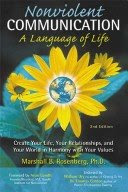 Arnhem sits between a great National park, the Veluwe and the Rhine river and the Posbank, another great nature preserve. One of the greenest city's in the Netherlands, it has a varied terrain, including huge fields of heather, forests and lowlands by the river, all a short bikeride away from whatever spot in Arnhem you are.
Arnhem sits between a great National park, the Veluwe and the Rhine river and the Posbank, another great nature preserve. One of the greenest city's in the Netherlands, it has a varied terrain, including huge fields of heather, forests and lowlands by the river, all a short bikeride away from whatever spot in Arnhem you are.The veluwe is a great spot for observing wildlife, it has a "free bicycle plan" that allows you to ride one of their bikes from anywhere in the park to anywhere else and leave it there.
The Posbank is known for it's beautiful hilly heather fields. The infrastructure is excellent and the terrain provides a great challenging workout for cyclists.
The city itself has a lot of parks and greenzones as well. You can walk from my house about 5 miles, all the way to the Veluwe's edge through green terrain all the way. You'd never know you're in the middle of a city.
 In addition to the beautiful landscape Arnhem has one of Europes greatest zoo's. Burger's Zoo has tropical gardens, bush landscape, a sealife aquarium, safari, desert, and even a mangrove. There's a jungle greenhouse with a hanging log bridge in it that is host to an incredible array of animals as well as beautiful flowering plants and huge ferns and trees. It has many educational fascilities and has breeding programmes and exchange of animals with many European Zoo's.
In addition to the beautiful landscape Arnhem has one of Europes greatest zoo's. Burger's Zoo has tropical gardens, bush landscape, a sealife aquarium, safari, desert, and even a mangrove. There's a jungle greenhouse with a hanging log bridge in it that is host to an incredible array of animals as well as beautiful flowering plants and huge ferns and trees. It has many educational fascilities and has breeding programmes and exchange of animals with many European Zoo's. In the center of Arnhem there's a set of unique cellars that is a must see! The cellars were built from the start of 1400 until the middle of the last century, with constant redecorations going on well into the year 2000. In 2002 city council bought a large number of these historic cellars and connected them all underground to form a truly magical trip into ages long gone. See where in the middle ages they raised pigs, right under their houses and stores. Marvel at the fact that the pigs were brought in as piglets and left the building as porkchops, the first examples of bio-industry. The oldest cellars are closest to the entrance, as they were built close to the city gates at the time. In later times more cellars were dug and walking through them is a trip through 5 centuries. Every wednesday and friday there's guided tours with the guild of Arnhem.
In the center of Arnhem there's a set of unique cellars that is a must see! The cellars were built from the start of 1400 until the middle of the last century, with constant redecorations going on well into the year 2000. In 2002 city council bought a large number of these historic cellars and connected them all underground to form a truly magical trip into ages long gone. See where in the middle ages they raised pigs, right under their houses and stores. Marvel at the fact that the pigs were brought in as piglets and left the building as porkchops, the first examples of bio-industry. The oldest cellars are closest to the entrance, as they were built close to the city gates at the time. In later times more cellars were dug and walking through them is a trip through 5 centuries. Every wednesday and friday there's guided tours with the guild of Arnhem. The open air museum is another great way to explore the history of the region. Buildings spanning some 250 years have been rebuild in the large park, in a nice sampling of the Netherlands through the ages. The topical exhibit this year is esspecially interesting for any expat's: Immigration to the "new world". It's great for kids too, as they offer scavenger hunts and they can try their hands at some of the old crafts being shown around the museum.
The open air museum is another great way to explore the history of the region. Buildings spanning some 250 years have been rebuild in the large park, in a nice sampling of the Netherlands through the ages. The topical exhibit this year is esspecially interesting for any expat's: Immigration to the "new world". It's great for kids too, as they offer scavenger hunts and they can try their hands at some of the old crafts being shown around the museum.Helpful hint: "The map is not the territory"


















